While admiring the Passion façade and all ofSubirachs’ sculptural work, more than once visitors are surprised to discover a series of numbers inside a square and wonder what they mean.
Well, it is a magic square, but in this case, it is a very special one. In this article, we’ll try to explain why.
A magic square is a series of numbers on a square grid, placed so that any row, column or diagonal line always adds up to the same number. This sum is known as the magic constant of the square.
Magic squares start with 3×3 grids, as there’s no possible solution to a 2×2 grid and a 1×1 grid doesn’t make sense.
Normally, this means putting correlating whole numbers into the grid: for a 3×3 grid, the numbers from 1 to 9; for a 4×4 grid, the numbers from 1 to 16. Starting from these rules, the magic constant cannot be chosen and depends on the sum of the numbers used. For example, in a 3×3 magic, square where the sum of 1+2+3+4+5+6+7+8+9=45, each row, column and diagonal line sums 45/3 = 15; in a 4 x 4 magic square, where the sum of all the numbers from 1 to 16 is 136, the magic constant is 136/4 = 34. So, for a 5×5 square, the constant is 65; for a 6×6, it’s 111; and for a 7×7, 175.
However, the Sagrada Familia magic square is 4×4 and doesn’t meet these basic initial conditions. On the one hand, it doesn’t have all the numbers from 1 to 16 (it is missing the 12 and 16) and some numbers are repeated. On the other hand ―and herein lies the symbolic key―, the magic constant isn’t 34 but 33.
Subirachs took an existing magic square, from German painter Albrecht Dürer’s engravingMelencolia I, and adapted it, repeating the numbers 14 and 10 instead of 12 and 16, to make it add up to 33, the age Jesus is traditionally believed to have been executed. I diem «tradicionalment suposada» perquè, històricament, aquesta dada mai no ha pogut ser validada al 100 %. No obstant això, el cert és que el 33 és també una xifra simbòlica, i en aquest sentit gens a l’atzar, basada en la importància del nombre 3, que, en el món cristià, és símbol de la trinitat.
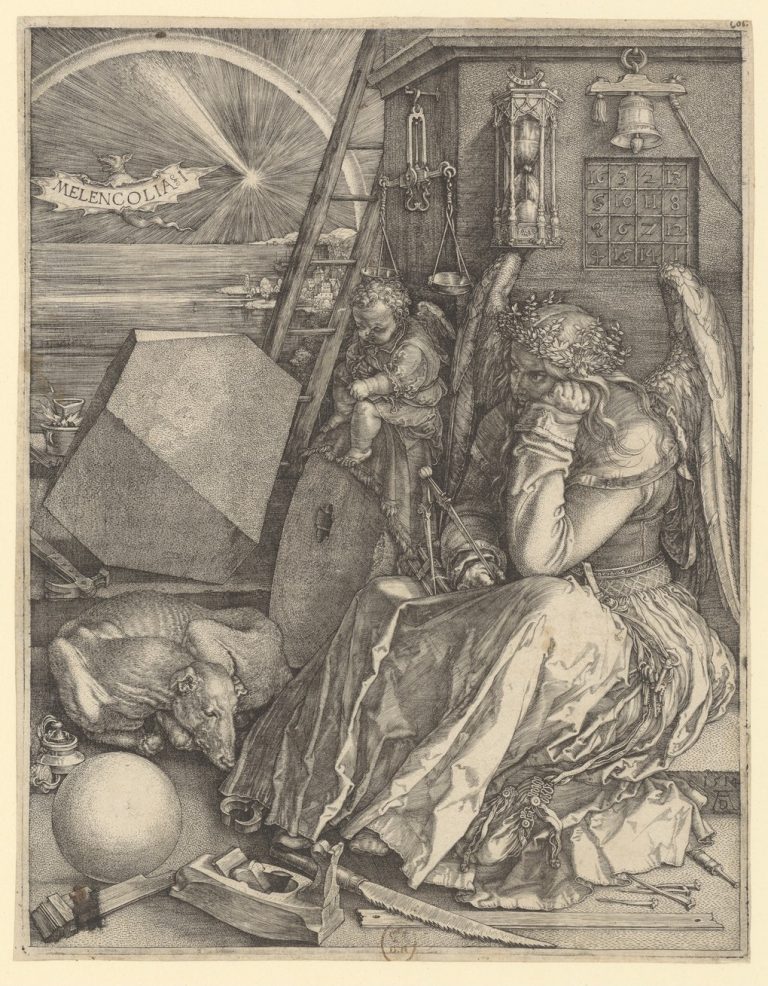
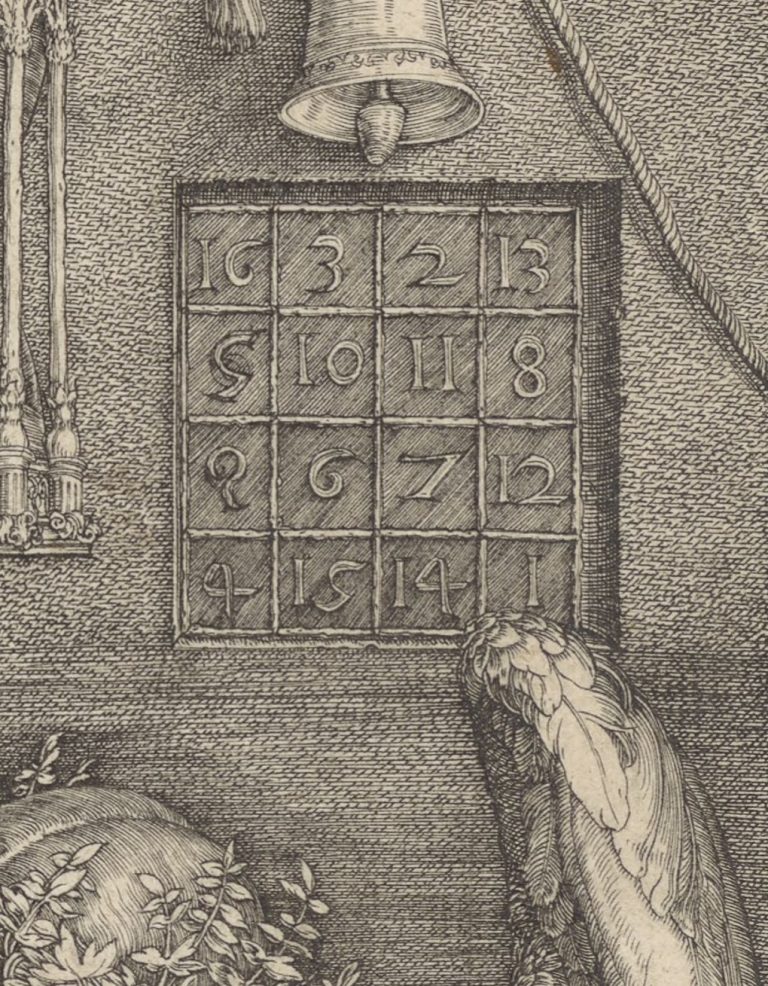
Nevertheless, Dürer’s engraving was a very special starting point for Subirachs. A més de poder obtenir la constant màgica sumant files, columnes o diagonals, aquesta també es pot obtenir a través de moltes altres combinacions. Així mateix, com una mena de signatura o colofó de l’autor, les dues xifres centrals de fila inferior, el 15 i el 14, formen l’any en què s’executà l’obra: el 1514.
The square at the Sagrada Família also has some of these characteristics and, so, in addition to the rows, columns and diagonals, there are many other options that add up to the magic constant of 33.
For some examples, see the ones marked here in different colours, which are the most notable combinations of four numbers that add up to 33:
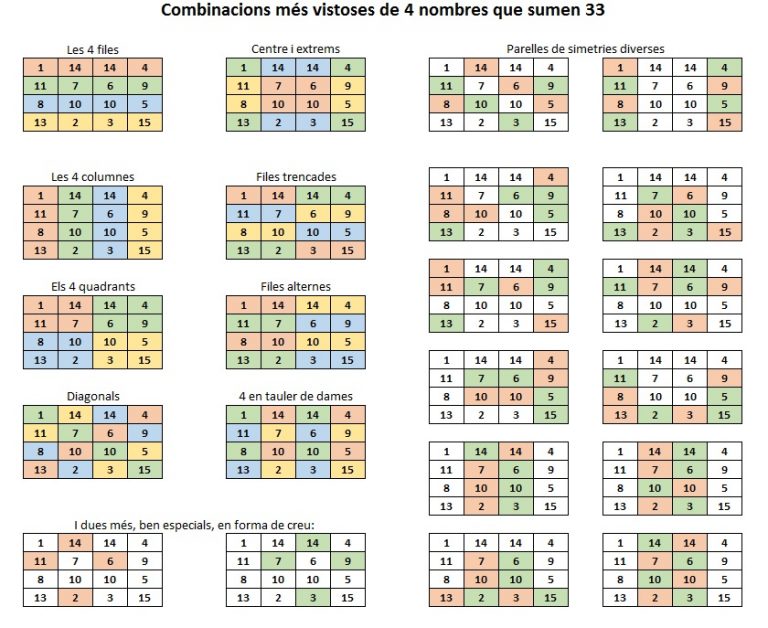
Plus, in the magic square at the Sagrada Família, there is also a sort of hidden subliminal signature : adding up the numbers that repeat and looking at their correspondence in the Roman alphabet, we get the initials INRI.
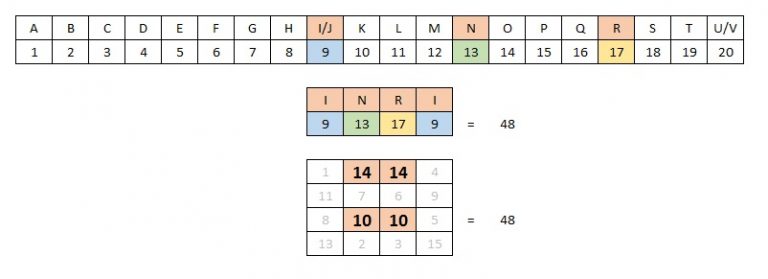

The initials INRI meansIesus Nazarenus Rex Iudaeorum(Jesus of Nazareth King of the Jews). This is the sign that Pontius Pilate wrote on the Jesus’ cross and here, his signature.
Subirach chose these four numbers because there is one from each row, column, diagonal and quadrant, and also because the sum of these repeated numbers is 48, or four times twelve. All within the symbolic framework of what the numbers represent.
MAGIC SQUARES, A FASCINATION WITH NO KNOWN USE
Els quadrats màgics recorded as far back as the third millennium BC in ancient China. Segons una llegenda, calia ordenar les ofrenes per calmar la ira dels déus segons un quadrat de 3 x 3. També es coneixen combinacions d’aquesta mena en la cultura índia, l’egípcia, l’àrab i la grega. Segons les diferents tradicions, s’han atribuït propietats astrològiques i divines a aquests tipus de quadrats, que sovint van ser representats en talismans, i s’han relacionat amb el sol, la lluna i els planetes del nostre sistema solar. A Occident van ser introduïts a partir del s. XIV pels àrabs i el monjo grec Mochopoulus i, a partir d’aleshores, van atreure l’atenció de grans matemàtics com ara Fermat, Pascal, Leibnitz o Euler, que hi van dedicar diverses obres malgrat que no se’n conegui cap utilitat pràctica concreta.
The basic 3×3 square is quite simple to create, even for those who aren’t expert mathematicians. By finding groups of three numbers that add up to 15, we see that only the number 5 can go in the centre, which must participate in four different combinations that add up to the magic constant (row, column and two diagonals). Continuing in the same manner, we find the numbers that have to go in the corners and on the sides. This will give us the one possible solution, although by turning it different ways we come up with eight possible variants.

The 4×4 square, however, is much more complicated, with 110 possible solutions that, turned different ways, give us 880 variants. Dürer’s is one of these. They all have 34 as the magic constant, but we can see that some solutions are more magical than others in terms of the number of possible combinations that add up to 34.
En el cas del quadrat de la Sagrada Família, has a total of 310 combinations that add up to 33. Here are the seventeen possible combinations of three numbers:
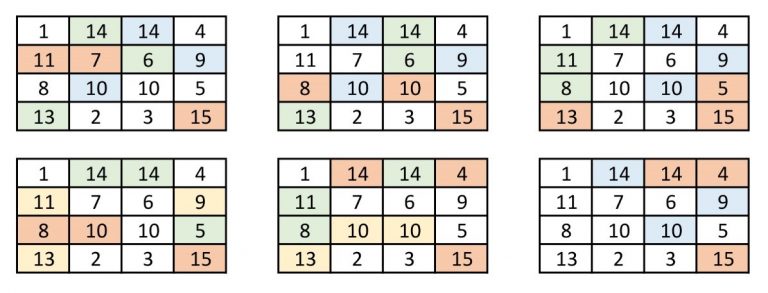
With four numbers, there are 88 possible combinations that add up to 33; with five, there are 131; and with six, 66. With seven numbers, there are eight different combinations:

As 1+2+3+4+5+6+7+8=36, more than 33, there’s no possible group of eight numbers or more that can add up to the magic constant of 33.
MAGIC SQUARES TODAY
Dan Brown’s best-selling novel The Lost Symbol, best-sellerwhich takes place in Catalonia, Barcelona and at the Sagrada Família, also uses Dürer’s magic square as a key to the puzzle to be solved. The author uses an anagram of Isaac Newton with the same seven letters as his name in Latin, Isaacus Neuutonus, reorganised to spell out the message “Jeova Sanctus Unus”. If we put these letters in the same order as the seven numbers in Dürer’s famous magic square, they are encrypted as:

As you can see, centuries and centuries go by but magic squares are here to stay. And at the Sagrada Família we have a very special one that will go down in history.

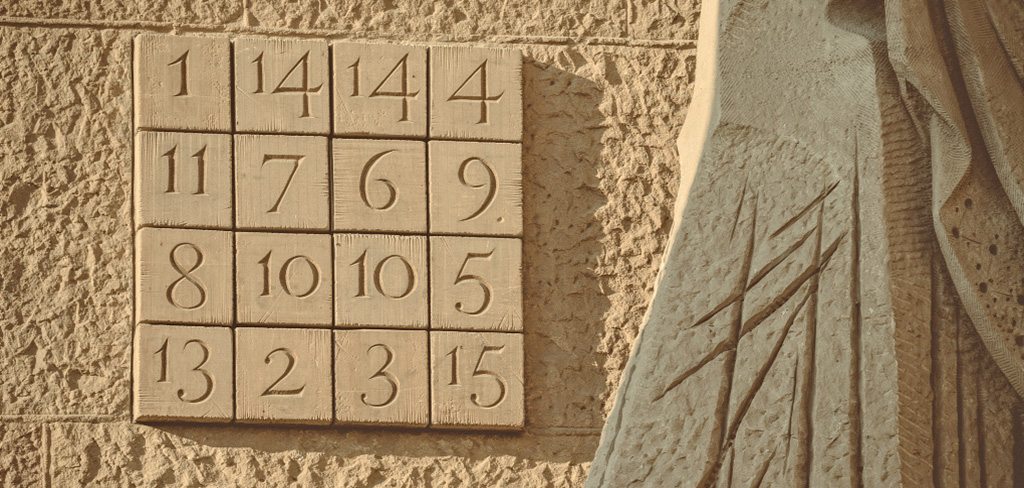
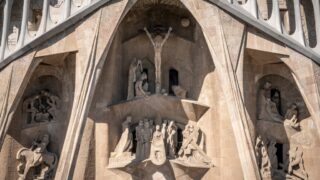
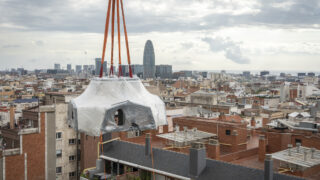
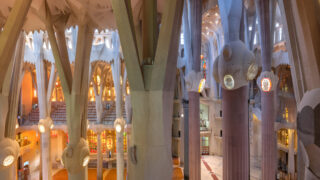
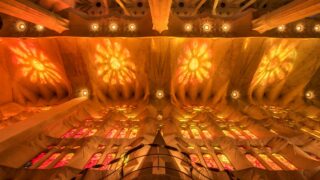
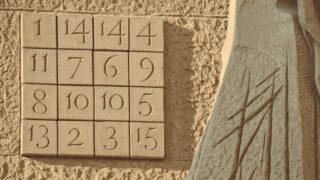
1 comment
Gisella Bustamante
Increíble y muy buena explicación. Muchas gracias , me gusto mucho , excelente